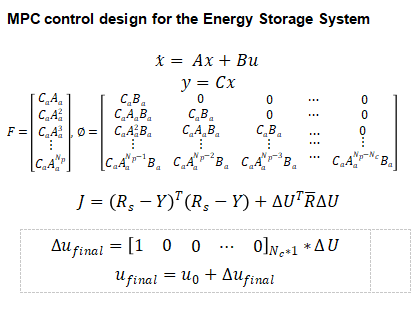Academic paper written by Mishkat Ullah Jan
时间: 2021-07-15 来源:
Frequency Regulation of an Isolated Microgrid with Electric Vehicles and Energy Storage System Integration using Adaptive and Model Predictive Controllers
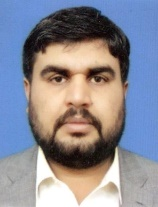
Mishkat Ullah Jan
2017-2021
PhD Electrical Engineering
However, their massive cost, as well as degradation tendency, are the restricting considerations that demand alternative solutions to provide stable microgrid operation. To assist ESS, the electric vehicles (EVs) are incorporated into the system. EVs have been gradually commercially viable and considerable focus has been paid to vehicle-to-grid technologies. Appropriate collaboration between ESS and EVs has good capability to manage the frequency irregularities to ensure the efficient operation of the MG. This paper presents a novel combination of two control techniques i.e., model predictive control (MPC) and adaptive droop control (ADC), to tackle the frequency regulation issue in the isolated MG, by effectively controlling the ESS and EVs during the large-scale integration of RESs or huge change in load demand. Firstly, the MPC regulates the ESS according to the system frequency deviation, and secondly, the ADC manages the power of EVs according to system specifications by retaining the least possible power for potential usage of EVs. Moreover, an advanced genetic algorithm is applied to tune the MPC and ADC parameters in order to achieve optimized performance. An isolated MG is modelled and verified in MATLAB/Simulink using the above-mentioned control techniques. Further, different case studies are taken into account to validate the combination of ADC and MPC for frequency regulation of an isolated MG. Additionally, the proposed MPC controller is compared with fuzzy logic proportional-integral (FPI) controller and proportional-integral (PI) controller, the MPC provides better performance results as compared with FPI and PI controllers.
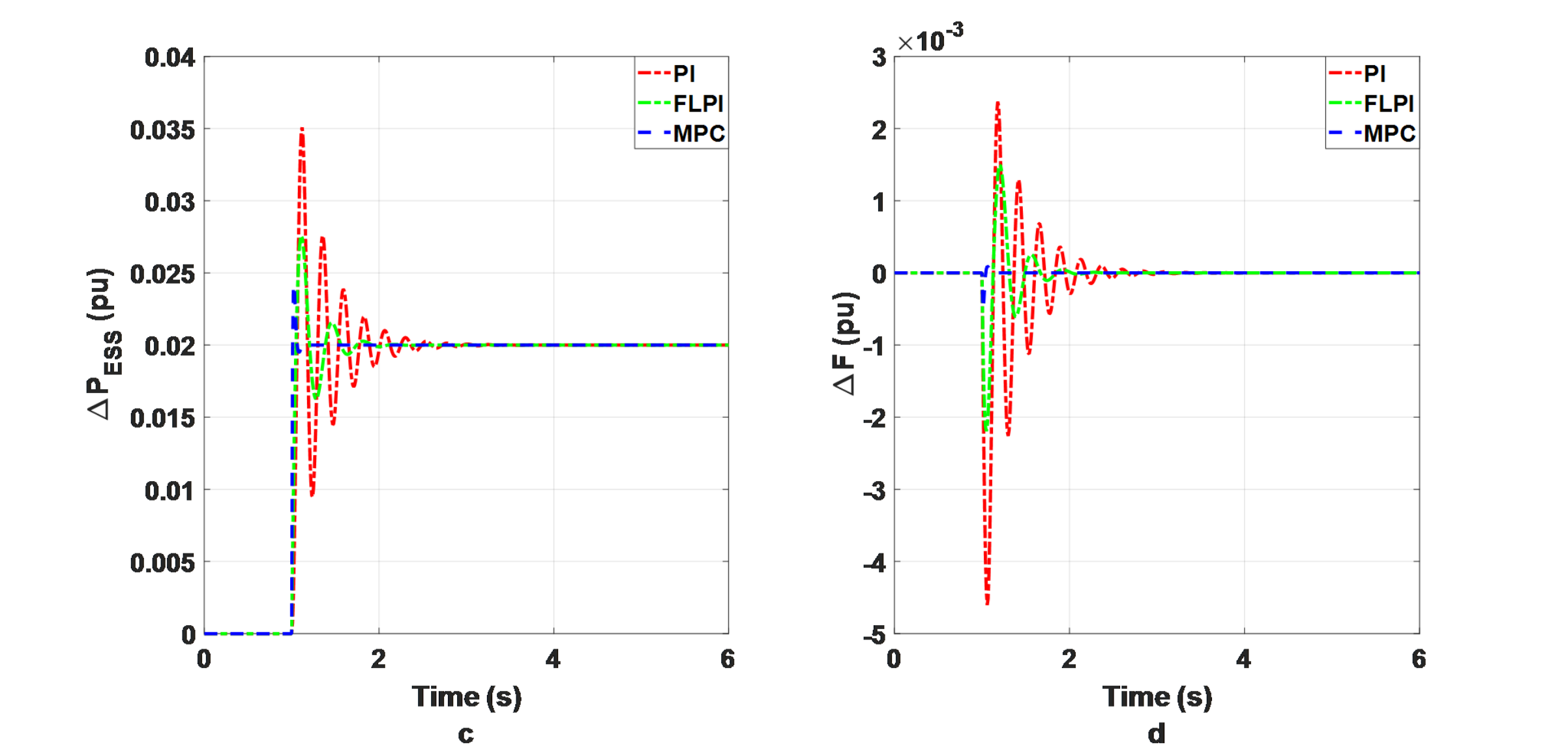
The performance results for ESS for load variations by PI, FPI, and MPC controllers. (c) the power of the ESS (d) The frequency response
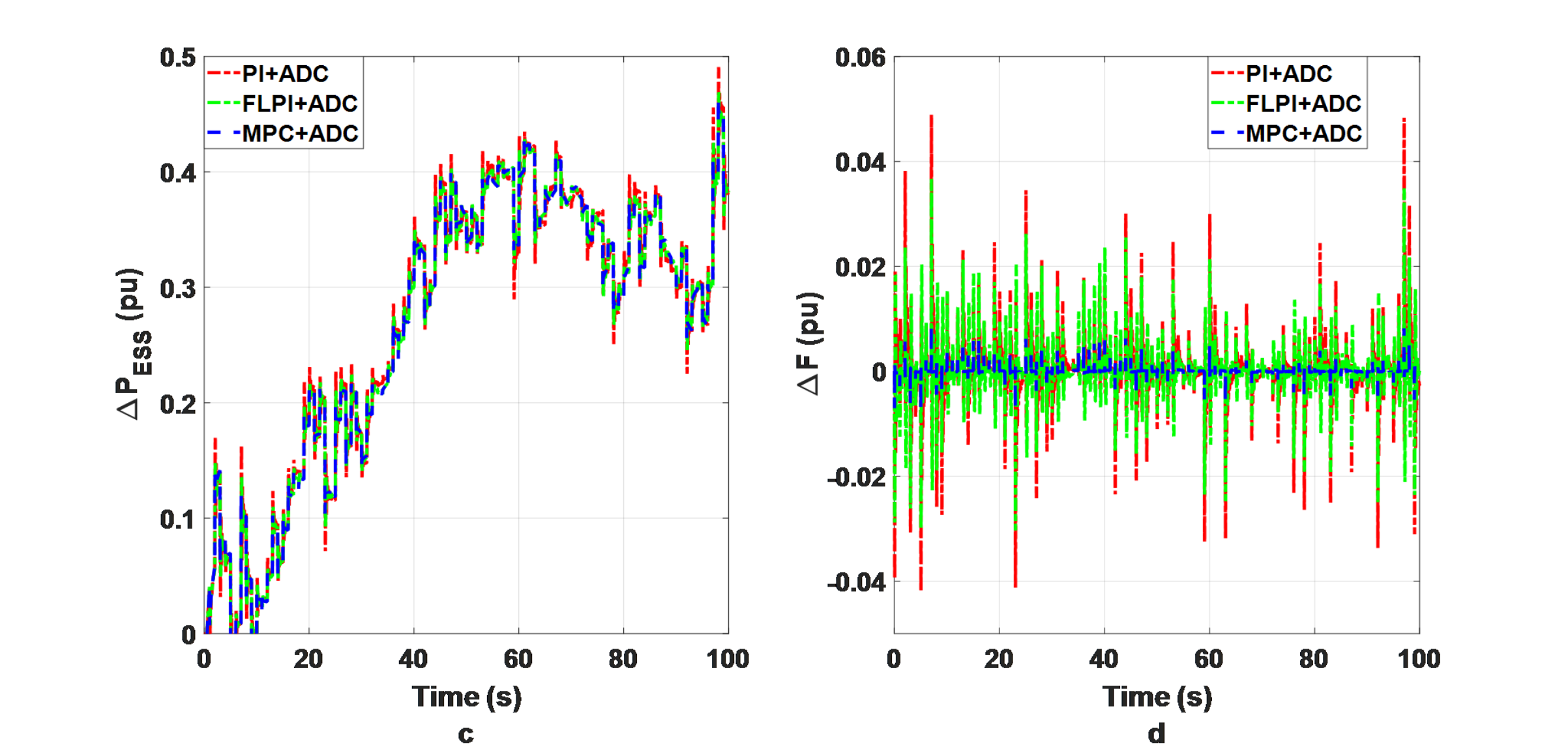
The performance results for ESS/EV for variable load variations with RESs penetration by PI/ADC, FPI/ADC, and MPC/ADC controllers. (a) step-change load variation in p.u. (b) The input signal of ESS. (c) the power of the ESS (d) The frequency response
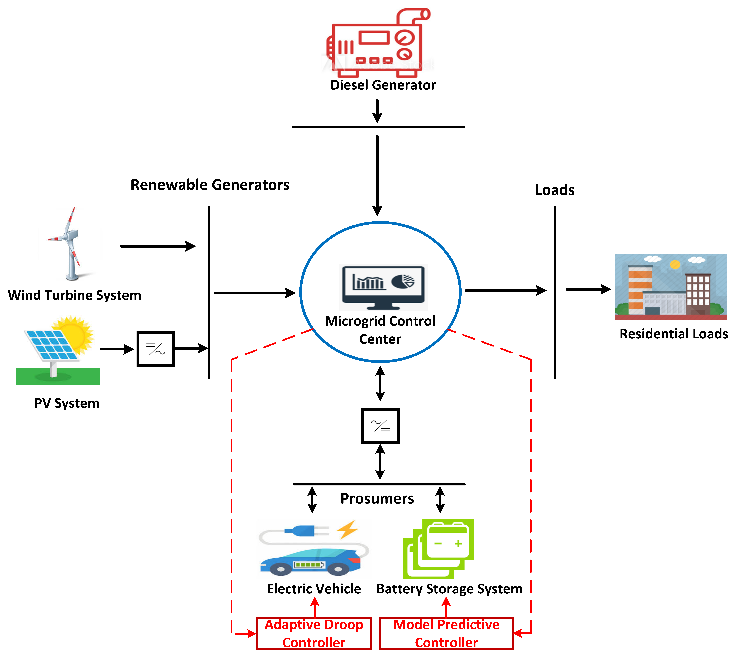
The isolated microgrid dynamic model.
In order to verify the stable and reliable operation of the microgrid (MG), extensive research has been conducted on it in recent years. As mentioned above, there are many types of MGs with different operational roles. Here, in this study, an isolated MG is studied in order to validate the performance of various controllers on frequency regulation. The main energy sources are diesel generators (DG) and renewable energy sources (RESs), including wind farms and solar photovoltaic systems. Secondly, the prosumers are introduced, which includes the electric vehicles (EVs) and energy storage system (ESS), and finally, the domestic loads are used as the power consumers as shown in Fig. 1. The eq. (1) provides the complete structure of the isolated MG used for frequency regulation, while the detailed information of each part is given next subsections.
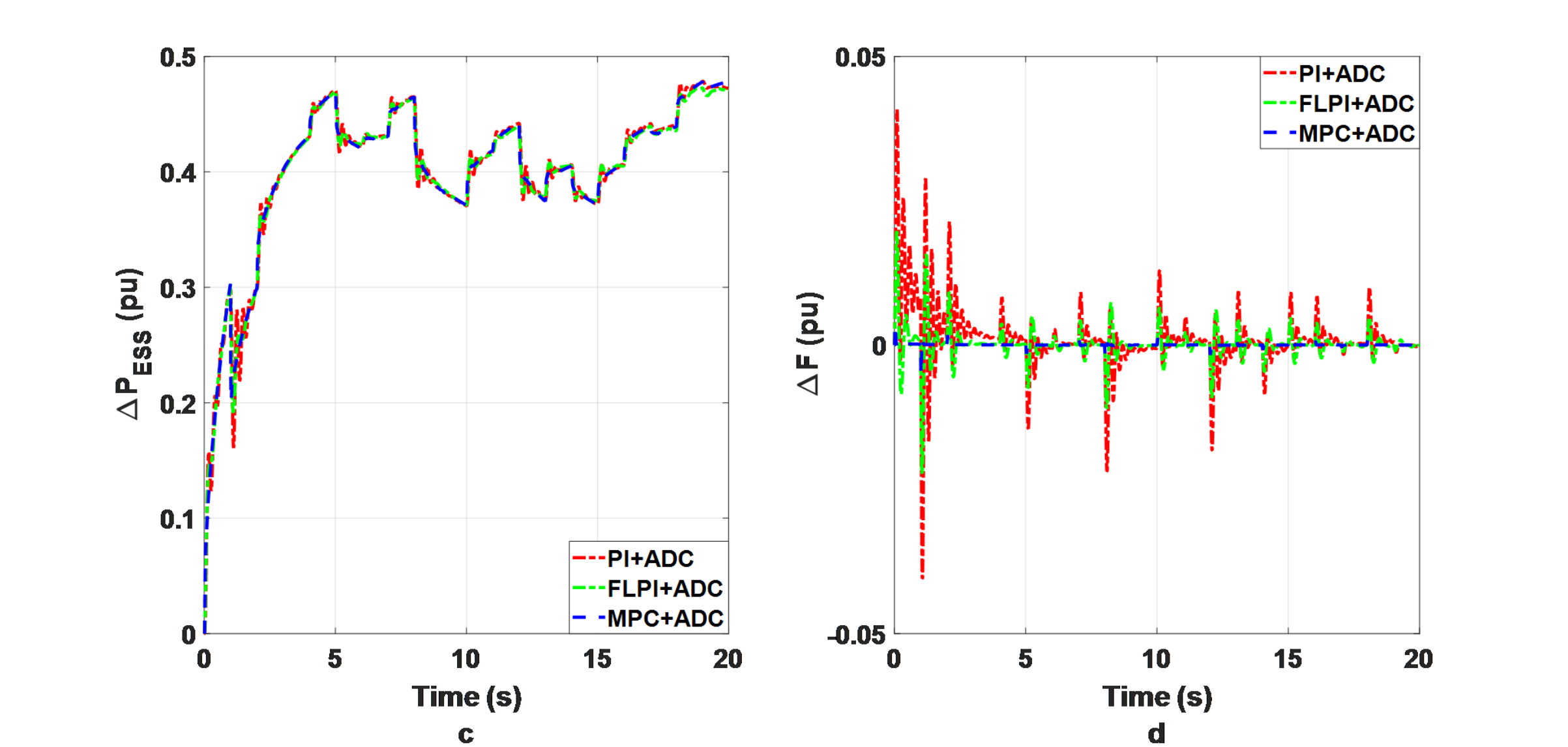
The performance results for ESS/EV for unit step load variations with RESs penetration by PI/ADC, FPI/ADC, and MPC/ ADCcontrollers. (a) step-change load variation in p.u. (b) The input signal of ESS. (c) the power of the ESS (d) The frequency response
